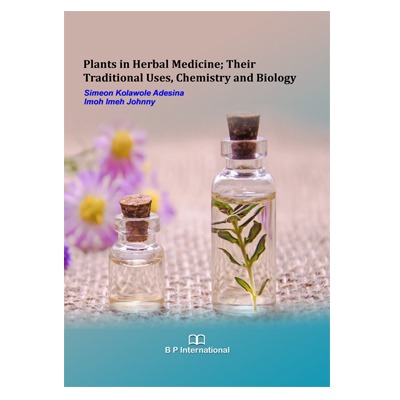Many books have been written on traditional medical practice, herbal medicines of various cultures and others on complementary and alternative medicine. There are many reviews and other books that have listed and described medicinal plants used in these forms of medicines to manage/treat specific diseases. There are also books which have listed such plants and their medicinal values without a word on what such plants contain as active constituents. Our aim in this book is to present information on over 400 medicinal plants that are commonly used in herbal medicine. Such information covers their traditional uses, chemistry and known biological values as established by medicinal plant research. Thus this book will attempt to fill a gap, describing these plants properly and providing explanation or rationale for their efficacies and use in herbal medicine.
The book is designed to be both a text for use in teaching and research in many areas of Pharmacy; useful also as a reference book. It is a book to consult when you want to start any research work on plants commonly used in herbal medicine and to update your knowledge in any area of medicinal plant research. It is a book to consult when herbal practitioners and pharmaceutical outfits across the globe want to identify plants, update their knowledge of the plant and even make use of the plant in medicines. As the book contain plants commonly used as food, it is recommended to nutritionists and all healthcare scientists/workers who must update their knowledge of these plants and their products as nutritional and dietary considerations are now valued in all healing processes and food preparations.
The early parts of the book introduces the reader to medicinal plant research- plant use traditionally- ethnopharmacology, plant identification, collection and storage- portraits of the plants are provided, aspects of plant processing, importance of medicinal plants, what plant active ingredients mean, the impact of religion on plant utilization, what phytochemistry means, dosage forms presentation and the consideration of some plants listed according to their botanical families. The early chapters of the book covers plants in the families from Acanthaceae to Menispermaceae while the later continues with the family Moraceae ending with the families of plants in Zygophyllaceae. Fifteen medicinal plants in a special class- Pteridophyta and described as pteridophytes have been added. The book also comprises an explanation of medical terms and the compilation of plants used for specific health dis-order or a group of health dis-orders.
We hope that we have prepared a book that will be of great use for medical practice and medicinal plant research as well as a shelf reference for all who must use the plant and its products as food, in medicines and as a natural endowment.





